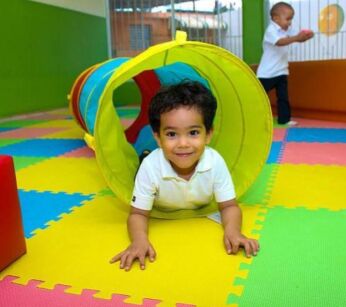Color! It’s everywhere you look! It plays a major role in our moods, emotions, behavior and even learning. In this Color Psychology & Child Development lesson, students will explore the impact of color on a child’s development and then create a nursery or bedroom, playroom or child-friendly classroom based on what they’ve learned.
students will explore the impact of color on a child’s development and then create a nursery or bedroom, playroom or child-friendly classroom based on what they’ve learned.
Set
- Show students the picture of color monsters only. Ask students to answer the prompt with a “color only” answer: “How are you feeling today?” Ask students to share their color answer and keep track of how many answered for each color. Revisit later.
- Can certain colors influence us? If so, how? If not, why not?
- View: The Psychology of Color Tedx or your could read/show students the children’s story titled, “The Color Monster“. If you are using the children’s book, you could revisit the initial prompt and ask students if the color they shared is truly how they are/were feeling to see if their prediction was correct.
- Now that you know a little more about color, let’s break this down even more and focus on how color psychology impacts child development.
Materials
- iPad or Laptop
- Projector & Screen
- The Color Monster Book (optional–affiliate link)
- EduProtocols Field Guide (affiliate link)
- Supplies for Projects
Activities
- There are several options for learning about the color psychology information; Choose what works best for you and your class.
- Assign the article titled, How Color Psychology Impacts Child Development and complete the corresponding questions and scenarios.**This one would be best if using this assignment as a sub plan.
- Assign students the Iron Chef template, an EduProtocols strategy. The worksheet could still be assigned following the presentations as an application activity.
- Assign student groups The Paper Slide Presentation Project. Here’s a Paper Slides tutorial. The worksheet could still be assigned following the presentations as an application activity.
- When students are finished, discuss the questions and scenarios as a class or collect for a grade: your call! This would also be a good time to revisit the initial color prompt if you’ve not already done so and ask students if the color they shared is truly how they are/were feeling to see if their prediction was correct.
- To conclude the lesson, have students complete the case studies. Again, discuss as a class or collect for a grade: your call!
- If you wish to take this lesson a step further, have students actually create a room for an assigned child by age applying color psychology.
- Rooms could be done as a nursery, bedroom, playroom or preschool classroom.
- Rooms could be hand generated in the form of a shoebox room, or students could create a mood board showing all recommendations. If creating a bedroom or nursery, students could create a digital room using the “Design with Friends” free website.
Attachments
- Intro Activity: Color–How Are You Feeling? (PDF)
- The Impact of Color Psychology on Child Development Questions & Scenarios (PDF)
- Impact of Color Psychology on Child Development__Iron Chef Jigsaw Style Challenge (please make a copy–go to file, click make a copy and it’s your to edit/use)
- Paper Slides Presentations (PDF)
- Color Case Studies (PDF)

